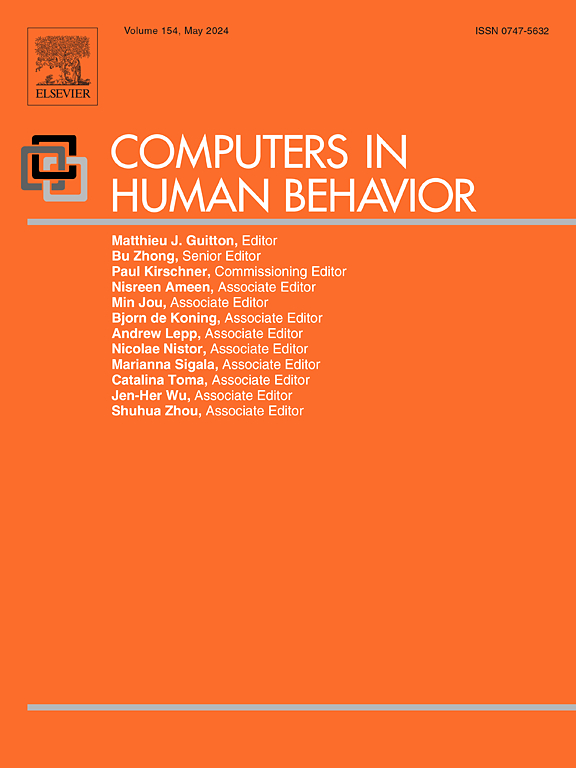发现青少年网络受害的相关因素:利用机器学习和网络分析
IF 8.9
1区 心理学
Q1 PSYCHOLOGY, EXPERIMENTAL
引用次数: 0
摘要
青少年网络受害问题日益严重,引起了公众的极大关注。最近的研究转而使用一种更稳健的方法--机器学习,来探索青少年网络受害的重要预测因素。目前的研究测试了一种极端梯度提升(XGBoost)机器学习算法,以检测青少年网络受害的相关因素,并使用网络分析来探索这些因素之间的关联,以便未来采取有针对性的干预措施。本研究采用为期6个月的纵向设计,共有1181名中国青少年(平均年龄为(15.78±1.67)岁,55.9%为女生)参与研究。通过使用 SHAP 值,性能令人满意的 XGBoost 模型从 22 个与网络暴力相关的变量中选出了前 10 个特征。网络分析结果表明,适应不良的认知情绪调节策略是一个中心节点,它与负性自我模式和抑郁呈正相关。XGBoost模型和网络分析是发现和了解青少年网络受害相关因素的有用方法。此外,这些重要因素还能为未来网络受害干预提供启示。本文章由计算机程序翻译,如有差异,请以英文原文为准。
Discovery of cybervictimization-associated factors among adolescents: Using machine learning and network analysis
The issue of cybervictimization among adolescents is escalating, presenting a significant public concern. Recent research has turned to use a more robust method, machine learning, to explore important predictors for adolescent cybervictimization. The current study tested an extreme gradient boosting (XGBoost) machine learning algorithm to detect cybervictimization-associated factors among adolescents and used network analysis to explore associations between these factors for future targeted interventions. By combining a 6-month longitudinal design, a total of 1181 Chinese adolescents (the average age was 15.78 ± 1.67 years, 55.9% girls) participated in the study. The XGBoost model with satisfactory performance selected the top 10 features from 22 variables associated with cybervictimization by using SHAP value. The network analysis results indicated that maladaptive cognitive emotion regulation strategy is a central node and it has positive correlations with negative self-schema and depression. The XGBoost model and network analysis were useful methods for discovering and understanding cybervictimization-related factors among adolescents. Moreover, these essential factors could offer insights into future interventions for cybervictimization.
求助全文
通过发布文献求助,成功后即可免费获取论文全文。
去求助
来源期刊

Computers in Human Behavior
Multiple-
CiteScore
19.10
自引率
4.00%
发文量
381
审稿时长
40 days
期刊介绍:
Computers in Human Behavior is a scholarly journal that explores the psychological aspects of computer use. It covers original theoretical works, research reports, literature reviews, and software and book reviews. The journal examines both the use of computers in psychology, psychiatry, and related fields, and the psychological impact of computer use on individuals, groups, and society. Articles discuss topics such as professional practice, training, research, human development, learning, cognition, personality, and social interactions. It focuses on human interactions with computers, considering the computer as a medium through which human behaviors are shaped and expressed. Professionals interested in the psychological aspects of computer use will find this journal valuable, even with limited knowledge of computers.
 求助内容:
求助内容: 应助结果提醒方式:
应助结果提醒方式:


